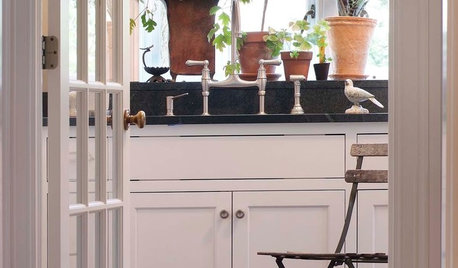need winterizing help a.s.a.p.
jimcarp
16 years ago
Related Stories

PETSHow to Help Your Dog Be a Good Neighbor
Good fences certainly help, but be sure to introduce your pup to the neighbors and check in from time to time
Full Story
EARTH DAYHow to Help Your Town’s Beneficial Birds and Bugs
Make a habitat using local materials to provide a home to the creatures that help our gardens
Full Story
ORGANIZINGDo It for the Kids! A Few Routines Help a Home Run More Smoothly
Not a Naturally Organized person? These tips can help you tackle the onslaught of papers, meals, laundry — and even help you find your keys
Full Story
MOST POPULAR7 Ways Cats Help You Decorate
Furry felines add to our decor in so many ways. These just scratch the surface
Full Story
REMODELING GUIDESWisdom to Help Your Relationship Survive a Remodel
Spend less time patching up partnerships and more time spackling and sanding with this insight from a Houzz remodeling survey
Full Story
DECLUTTERINGDownsizing Help: How to Get Rid of Your Extra Stuff
Sell, consign, donate? We walk you through the options so you can sail through scaling down
Full Story
HOUZZ TOURSMy Houzz: 38 Years of Renovations Help Artists Live Their Dream
Twin art studios. Space for every book and model ship. After four decades of remodeling, this farmhouse has two happy homeowners
Full Story
HEALTHY HOMEDecorate With Intention: Let Your House Help You De-Stress
Break free of automatic TV time and learn how to really unwind and recharge with these easy ideas that don't cost a dime
Full Story
WINTER GARDENINGHow to Help Your Trees Weather a Storm
Seeing trees safely through winter storms means choosing the right species, siting them carefully and paying attention during the tempests
Full Story
GARDENING GUIDESGarden Myths to Debunk as You Dig This Fall and Rest Over Winter
Termites hate wood mulch, don’t amend soil for trees, avoid gravel in planters — and more nuggets of garden wisdom
Full StorySponsored
Your Industry Leading Flooring Refinishers & Installers in Columbus
More Discussions






fignut
konjacking
Related Professionals
Beachwood Landscape Contractors · Brookfield Landscape Contractors · Kaysville Landscape Contractors · Mission Viejo Landscape Contractors · York Landscape Contractors · Braintree Decks, Patios & Outdoor Enclosures · Fullerton Decks, Patios & Outdoor Enclosures · Jackson Decks, Patios & Outdoor Enclosures · Livingston Decks, Patios & Outdoor Enclosures · Urbana Decks, Patios & Outdoor Enclosures · Westminster Decks, Patios & Outdoor Enclosures · Bonney Lake Fence Contractors · Daly City Fence Contractors · Agoura Hills Stone, Pavers & Concrete · Finneytown Stone, Pavers & Concretegorgi
konjacking
xgrndpounder
herman2_gw
chills71
elder
fignut
alb419_ny
fignut
alb419_ny
konjacking
fignut
leon_edmond
fignut
scott_ga
Scott F Smith
chills71
fignut
fignut
herman2_gw
fignut
konjacking
herman2_gw
Scott F Smith
fignut
leon_edmond
Scott F Smith
Scott F Smith
tonysiny
paulallen
fignut
gorgi